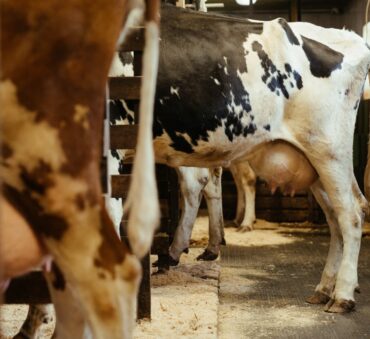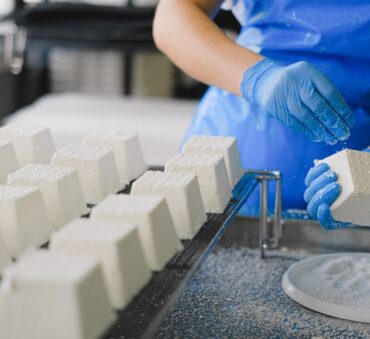Did you know that the dairy industry produces approximately 190 million metric tons of whey waste annually? This poses environmental challenges, as improper disposal can lead to pollution and other issues.
One way to reduce whey waste is turning it into another product like alcohol.
Producing alcohol from whey is an innovative and sustainable approach that’s gaining traction in the world of waste management.
But how can you turn whey into alcohol?
Let’s explore the intriguing process of making alcohol from whey, its benefits, and the types of alcohol that can be produced from whey.
Key Takeaways
- Alcohol production from whey is a sustainable solution for managing dairy waste and reducing its environmental impact.
- This innovative approach offers economic advantages for both dairy and alcohol producers, enhancing the profitability of operations.
- Whey can be used to create various types of spirits, including vodka, gin, rum, and whiskey, each with unique characteristics.
- Converting whey into alcohol reduces the environmental footprint of dairy production, contributing to a greener, more sustainable future.
Managing Whey Waste
Whey is a liquid by-product of cheese and yogurt production. While it may seem like a harmless leftover, the sheer volume of whey waste generated globally makes its management a challenging task.
Improper disposal of whey can contribute to water pollution, deplete oxygen levels in water bodies, and harm aquatic ecosystems.
Moreover, the cost of disposing of whey can be substantial for dairy producers. That’s why finding eco-friendly and economically viable solutions to manage whey waste is essential not only for the environment but also for the sustainability and profitability of dairy operations.
Benefits of Using Whey for Alcohol Production
Alcohol production from whey offers a range of advantages, both for alcohol producers and dairy industry stakeholders. Let’s delve into these benefits:
Benefits for Dairy Producers
Dairy farmers who give their whey waste to alcohol producers get the following benefits:
- Effective whey disposal: Whey, especially acid whey, can be challenging to manage due to its high acidity and organic content. Converting it into alcohol helps dairy farmers avoid traditional whey disposal problems related to costs, logistics, and compliance with environmental regulations.
- Reduced environmental impact: By diverting whey from conventional disposal practices, dairy producers significantly reduce their environmental footprint. This is especially crucial in regions where dairy operations are numerous, as it minimizes the risk of whey pollution in water bodies.
- Cost savings: Dairy producers can potentially negotiate favorable agreements where they not only dispose of whey efficiently but also receive compensation for their waste product. This transforms whey management from an expense into a potential revenue source.
- Compliance with regulations: Proper whey waste management is essential to comply with environmental regulations. Utilizing whey in alcohol production ensures that dairy producers meet these standards, avoiding potential fines and legal issues associated with improper waste disposal.
Benefits for Alcohol Producers
Alcohol producers who use whey can benefit from:
- Positioning as a “green” company: Embracing whey as a feedstock for alcohol production allows alcohol producers to position themselves as environmentally conscious companies. This image can resonate positively with consumers who increasingly prioritize eco-friendly products and practices.
- Access to free raw material: Since dairy producers often need to dispose of whey, they may be willing to provide it for free or at a minimal cost. This way, alcohol producers can reduce their ingredient expenses and even enhance competitiveness in the market.
- Positive brand image: Alcohol producers that prioritize environmental stewardship and waste reduction demonstrate corporate social responsibility. This can enhance their reputation and brand perception.
- Improved resource efficiency: Integrating whey into alcohol production represents an efficient use of resources. It reduces waste, maximizes the value of dairy by-products, and creates a closed-loop system where waste is transformed into a marketable product, benefiting both the dairy and alcohol industries.

Fermenting Whey to Produce Alcohol
Fermenting whey into alcohol is a multi-step process that can effectively convert this dairy waste into a valuable resource. The quality of the distilled alcohol depends on several crucial factors throughout this journey, including:
Whey Source
The quality and composition of the whey used significantly impact the final alcohol product. Whey is categorized into two main types:
Sweet whey: This type of whey results from cheese production using rennet, contains fewer acids and is typically preferred for alcohol production due to its milder flavor profile.
Acid whey: Dairy processes involving acid coagulation result in acid whey. This type of whey has a more acidic taste, making it less suitable for certain types of alcohol.
Whey Pretreatment
Before fermentation can begin, whey often requires pretreatment.
- For acid whey waste, this step involves adjusting the pH level, which is usually too low for the yeast to thrive. To do this, alkaline substances like calcium carbonate can be added to neutralize the acidity.
- For sweet whey, minor adjustments to pH might be necessary to optimize the fermentation process.
Additionally, any solids or impurities in the whey need to be removed to prevent potential issues during fermentation.
Fermentation Conditions
Fermentation is a critical step where yeast consumes the sugars in whey and converts them into alcohol. Several factors influence the quality of this process:
- Yeast selection: Choosing the appropriate yeast strain is vital. Different yeast strains produce varying flavors and alcohol content, allowing for modifications to the final product.
- Temperature control: Maintaining consistent fermentation temperatures is crucial. Yeast activity can be sensitive to temperature fluctuations, which can affect both the rate and quality of fermentation.
- Aeration: Some levels of aeration are beneficial for yeast growth and alcohol production. However, excessive oxygen exposure can lead to off-flavors and undesirable compounds.
Distilling Process
After fermentation, the alcoholic liquid (also known as “wash”) undergoes distillation. This process involves heating the wash to separate alcohol from water and other components based on their boiling points.
Factors influencing the quality of distilled alcohol include:
- Distillation equipment: The design and efficiency of the stills and columns affect the separation of alcohol from impurities.
- Temperature control: Precise temperature control during distillation helps ensure the separation of alcohol with minimal contamination.
- Cut points: Decisions about when to collect different fractions during distillation, known as “cut points,” influence the flavor and purity of the final alcohol.
By carefully managing these factors, alcohol producers can create a high-quality product from whey waste.
Next, let’s see what types of alcohol can be produced from whey.
Types of Alcohol That Can be Produced from Whey
Whey can be transformed into various types of alcohol, each with their unique characteristics and flavor profiles. Here are some of the most popular types of whey alcohol:
Vodka
Whey vodka typically exhibits a smooth, slightly sweet character. The distillation process ensures that vodka maintains a clean and pure flavor, making it a popular choice for cocktails and mixers.
Gin
Gin is a distinctive spirit that has rich botanical flavors. Whey-based gin offers an intriguing twist on this classic spirit. The whey base provides a slightly creamy texture, enhancing the gin’s mouthfeel. Additionally, it allows the botanicals to infuse more subtly, resulting in a gin with a nuanced herbal flavor.
Rum
Rum is typically crafted from sugarcane or molasses. However, some distillers have ventured into whey-based rum production. Whey imparts a distinct smoothness and sweetness to the spirit, making it stand out from traditional rums. This creamy character, coupled with aging in wooden barrels, contributes to a rich and complex flavor profile.
Whiskey
Whiskey encompasses a diverse range of spirits, including Scotch, Bourbon, and Rye. While grains are the conventional base material, innovative distillers have explored whey as an alternative. Whey-based whiskeys offer a milder and slightly sweeter profile compared to their grain-based counterparts. The choice of aging barrels can introduce additional layers of flavor and complexity.
Environmental Implications of Alcohol Production from Whey
Alcohol made from cheese whey delivers substantial environmental benefits since it helps with:
- Whey waste reduction: Traditionally, whey disposal methods like land application or wastewater treatment can have detrimental environmental effects. In contrast, using whey for alcohol production transforms this waste material into a valuable resource, minimizing its environmental footprint.
- Emission reduction: By repurposing whey for alcohol production, we can mitigate the carbon footprint associated with its disposal. This way, waste becomes a feedstock for valuable products, reducing the industry’s net environmental impact.
- Energy and water efficiency: Traditional alcohol production relies on grains and sugarcane as feedstocks. However, these materials require significant agricultural inputs, including land, water, and energy. In contrast, whey is readily available as a dairy by-product, reducing the need for additional resource-intensive crops.
- Circular economy: The integration of whey into alcohol production exemplifies the principles of a circular economy. It transforms a waste stream into a valuable product, reducing the need for virgin resources. This lessens the pressure on ecosystems and natural resources, fostering a more sustainable production cycle.
Conclusion
Converting whey into alcohol not only mitigates environmental challenges but also offers economic advantages to both dairy and alcohol producers. It’s also a great sustainable solution that aligns with circular economy principles.
Still not sure how to manage your whey waste sustainably?
Shapiro stands ready to assist in your cheese whey management needs. Our nationwide network of qualified partners ensures efficient and environmentally responsible waste management solutions.
Contact us to unlock the benefits of sustainable whey disposal and make a positive impact on your operations and the environment.
Alcohol from Whey FAQs
Still got questions on alcohol production from dairy waste? Here are some commonly asked questions and answers:
Besides using it to make alcoholic beverages, leftover whey can be repurposed into protein powder, utilized in animal feed, or processed into other dairy products to minimize waste.
Many dairy processors have anaerobic digestion systems that can convert whey into biogas, which can be used as an energy source. Alternatively, whey can be sent to wastewater treatment plants for processing, ensuring compliance with environmental regulations.
Generally, it takes approximately 10 liters of whey to produce one liter of vodka. However, this ratio can change depending on the specific vodka production method and the desired alcohol content.
Fermentation of whey protein involves the use of bacteria or yeast to break down the proteins in whey. This process can enhance the nutritional value of whey and create valuable byproducts like lactic acid, which has various industrial applications. Fermentation can also be employed to produce certain dairy products like yogurt and kefir.
Baily Ramsey, an accomplished marketing specialist, brings a unique blend of anthropological insight and marketing finesse to the digital landscape. Specializing in educational content creation, she creates content for various industries, with a particular interest in environmental initiatives.



